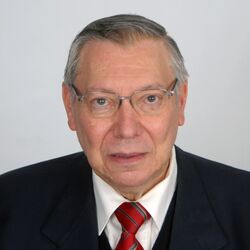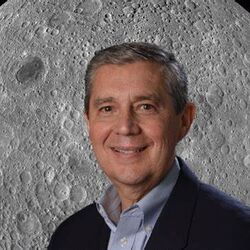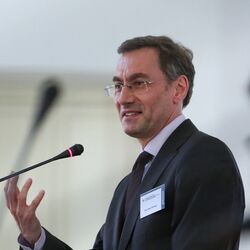Protecting the Moon Farside for Scientific Research is Urgent
Time: 13:45 - 14:55
Room: N03
Format: Workshop
Over the next several years governments and commercial operators are planning to place as many as 100,000 new satellites into near-Earth orbits to provide global high-speed internet access, telephony services, Earth observation, etc. Astronomers are already experiencing a low level of a new pollution, contamination of astronomical observations due to new satellite constellations and orbital debris. The big question that scientists are facing is: How do we fix it?
Starlink, OneWeb, Kuiper, and SatNet are examples of four new mega-constellations that will be launching thousands of satellites over the next few years. There are already more than 3,000 active satellites in low-Earth orbits, more than 3 times the number just a few years ago. And, this is just the beginning. The first generation of SpaceX's Starlink, when completed, will populate space with around 12,000 satellites. The second generation may add 30,000 more. The other three mentioned constellations, may deploy a total of over 20,000 satellites. Prior to 2018, the largest constellation was Iridium which totaled around 70 satellites. Even if the debris population is ignored, every active satellite represents a source of contamination. For example, satellite bodies as well as solar panels reflect sunlight. Think of a typical astronomer trying to capture faint objects in outer space. When a satellite constellation crosses a telescope's field of view multiple obscuring streaks may appear, interfering with astronomical observations. Can Mega-Satellite Constellations Destroy Astronomy? Satellite operators argue that only certain kinds of observation programs will be at risk. However, it is extremely difficult to predict just how bad the situation will get until all of the planned satellites are in orbit. Unfortunately, by that time it might be too late to fix the problem.
Now about the Moon Farside Protection. This Special Session advocates the support to the Moon Farside Protection by all scientists working in four different areas of science: Cosmology, Astrobiology, SETI and Planetary Defense: 1) COSMOLOGY needs the radio quietness on and above the Moon Farside to pick up the extremely feeble radiation of the hydrogen line at 1420 MHz as down-shifted to much smaller frequencies, MHz or kHz, by the 14 billion years of universe expansion. 2) ASTROBIOLOGY studies pre-biological interstellar molecules by virtue of their roto-vibrational spectra: a delicate search for feeble spectral lines that only advanced radio telescopes and the Moon Farside radio silence may achieve. 3) SETI needs radio quietness to possibly detect Alien Civilizations “signatures” that reach us very feeble because of the huge distances among stars in the Milky Way, if not from other galaxies. The discovery of one or more ExtraTerrestrial Civilizations in this or other galaxies would change the history of Humankind. 4) PLANETARY DEFENSE. The seeing from the Moon is wonderful (though the micro-meteorite risk is high). Thus, optical telescopes pointing at the (blocked) Sun would enable high-accuracy measurements of the orbital parameters of NEOs, greatly improving all data for Planetary Defense.
ORGANIZER

Claudio MACCONE
Director for Scientific Space Exploration and Chair, International Academy of Astronautics (IAA)
Italy

Jack O. BURNS
Professor, Center for Astrophysics and Space Astronomy, University of Colorado at Boulder
United States
FACILITATOR

Bernard FOING
, CEO ILEWG LUNEX EuroMoonMars, president Space Renaissance International, chief scientist QOSMOSYS
Netherlands
SPEAKERS

Jing PENG
Deputy Chief Designer of the Spacecraft System of the 3rd Phase of China’s Lunar Exploration Program, China Academy of Space Technology
China

Chuen Chern LOO
Head, Space Publication and Registration Division, Radiocommunication Bureau, International Telecommunication Union (ITU)
Switzerland

